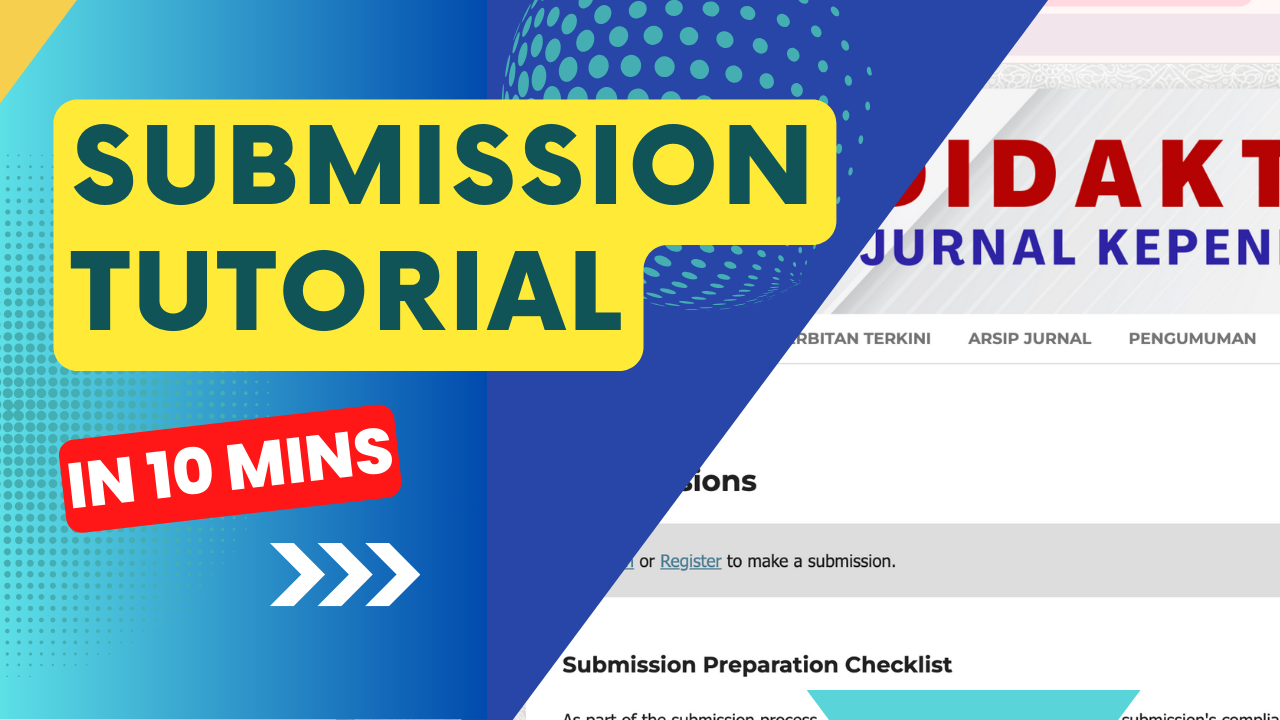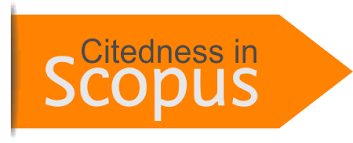Diversification of STEM (Science, Technology, Engineering, and Mathematics) Integrated Learning Models as an Innovation in Vocational Learning in the Merdeka Belajar Era
Abstract
This research presents a study on the implementation of STEM (Science, Technology, Engineering, and Mathematics) education in the context of vocational education in the era of independent learning, emphasizing self-directed learning. Through qualitative descriptive methods and literature review analysis, this study highlights the transformation of conventional teaching paradigms into more dynamic, creative approaches focused on developing students' problem-solving skills. The research findings confirm the improvement of students' competencies, including planning, design, reflection, construction, and modification aspects of STEM projects. Another significant discovery is that integrating STEM with other teaching models such as Project-Based Learning (PjBL) or Problem-Based Learning (PBL) effectively enhances students' critical thinking, creativity, communication, and collaboration skills regardless of gender. In conclusion, the implementation of STEM education not only prepares vocational education students to face the challenges of the 21st century and the era of independent learning but also stimulates students' interest and engagement in learning, promotes inclusivity, and enhances the overall quality of education.
Metrics
References
Afriana, J., Permanasari, A., & Fitriani, A. (2016). Penerapan project based learningAfriana, J., Permanasari, A., & Fitriani, A. (2016). Penerapan project based learning terintegrasi STEM untuk meningkatkan literasi sains siswa ditinjau dari gender. Jurnal Inovasi Pendidikan IPA, 2(2), 202. https://doi.org. Jurnal Inovasi Pendidikan IPA, 2(2), 202.
Avery, Z. K., & Reeve, E. M. (2013). Developing effective STEM professional development programs. Journal of Technology Education, 25(1), 55–69. https://doi.org/10.21061/jte.v25i1.a.4
Corlu, M. S., Capraro Prof., R. M., & Capraro, M. M. (2014). Introducing STEM education: Implications for educating our teachers for the age of innovation. Egitim ve Bilim, 39(171), 74–85.
Daulai, A. F., & Rosdiana A. Bakar. (2021). Dasar-Dasar Kependidikan. Perdana Mulya Sarana.
Deghaidy, H., Mansour, N., Alzaghibi, M., & Alhammad, K. (2017). Context of STEM integration in schools: Views from in-service science teachers. Eurasia Journal of Mathematics, Science and Technology Education, 13(6), 2459–2484. https://doi.org/10.12973/EURASIA.2017.01235A
Erlinawati, C. E., Bektiarso, S., & Maryani. (2019). Model Pembelajaran Project Based Learning Berbasis Stem Pada Pembelajaran Fisika. Seminar Nasional Pendidikan Fisika, 4(1), 1–4.
Guzey, S. S., Moore, T. J., & Harwell, M. (2016). Building up stem: An analysis of teacher-developed engineering design-based stem integration curricular materials. Journal of Pre-College Engineering Education Research, 6(1). https://doi.org/10.7771/2157-9288.1129
Hanna W. (2017). Pemikiran Sayyid Hossein Nasr Tentang Filsafat Perennial. EL-AFKAR : Jurnal Pemikiran Keislaman Dan Tafsir Hadis, 1(6), 55–60.
Havice, W., Havice, P., Waugaman, C., & Walker, K. (2018). Evaluating the effectiveness of integrative STEM education: Teacher and administrator professional development. Journal of Technology Education, 29(2), 73–90. https://doi.org/10.21061/jte.v29i2.a.5
Hidayat, R., & Abdillah, A. (2019). Ilmu Pendidikan (Konsep, Teori dan Aplikasinya). Lembaga Peduli Pengembangan Pendidikan Indonesia (LPPPI).
Honey, M., Pearson, G., & Schweingruber, H. (2009). STEM Integration in K-12 Education. In 70th Annual International Technology Education Association Conference. The National Academies Press. https://www.nap.edu/catalog/18612/stem-integration-in-k-12-education-status-prospects-and-an
Daugherty, M., & Carter, V. (2019). The Mississippi Valley Conference in the 21 st Century : Fifteen Years of Influence on Thought and Practice Editors Michael K . Daugherty & Vinson Carter Council on Technology and Engineering Teacher Education.
Kristiani, K. D., Mayasari, T., & Kurniadi, E. (2017). Pengaruh Pembelajaran STEM-PjBL terhadap Keterampilan Berpikir Kreatif. Prosiding SNPF (Seminar Nasional Pendidikan Fisika), 21(3), 266–274.
Lou, S. J., Chou, Y. C., Shih, R. C., & Chung, C. C. (2017). A study of creativity in CaC 2 steamship-derived STEM project-based learning. Eurasia Journal of Mathematics, Science and Technology Education, 13(6), 2387–2404. https://doi.org/10.12973/EURASIA.2017.01231A
Maulana, M. (2020). Penerapan Model Project Based Learning Berbasis Stem Pada Pembelajaran Fisika Siapkan Kemandirian Belajar Peserta Didik. Jurnal Teknodik, 39–50. https://doi.org/10.32550/teknodik.v0i2.678
Mulyana, K. M., Abdurrahman, & Roslin, U. (2018). Implementasi pendekatan science, technology, engineering, and mathematics (STEM) untuk menumbuhkan skill multirepresentasi siswa sma pada materi hukum newton tentang gerak. Jurnal Pendidikan Fisika, 7(2), 69–75.
Octaviyani, I., Kusumah, Y. S., & Hasanah, A. (2020). PENINGKATAN KEMAMPUAN BERPIKIR KREATIF MATEMATIS SISWA MELALUI MODEL PROJECT-BASED LEARNING DENGAN PENDEKATAN STEM. Journal on Mathematics Education Research, 1(1), 1–14. https://doi.org/10.1002/9781118396957.wbemlb237
Permanasari, A. (2016). STEM Education : Inovasi dalam Pembelajaran Sains. SEMINAR NASIONAL PENDIDIKAN SAINS “Peningkatan Kualitas Pembelajaran Sains Dan Kompetensi Guru Melalui Penelitian & Pengembangan Dalam Menghadapi Tantangan Abad-21” Surakarta, 22 Oktober 2016, 23–34.
Permanasari, A., Rubini, B., & Nugroho, O. F. (2021). STEM Education in Indonesia: Science Teachers’ and Students’ Perspectives. Journal of Innovation in Educational and Cultural Research, 2(1), 7–16. https://doi.org/10.46843/jiecr.v2i1.24
Rahmadhani, E., & Wahyuni, S. (2018). Kemampuan Pemahaman Konsep Dan Minat Mahasiswa Dengan Pendekatan STEM (Science, Technology, Enginnering, Mathematics). Seminar Nasional Pendidikan Matematika 2018, 01, 129–140.
Reeve, J. (2013). How students create motivationally supportive learning environments for themselves: The concept of agentic engagement. Journal of Educational Psychology, 105(3), 579–595. https://doi.org/10.1037/a0032690
Ritz, J. M., & Fan, S. C. (2015). STEM and technology education: international state-of-the-art. International Journal of Technology and Design Education, 25(4), 429–451. https://doi.org/10.1007/s10798-014-9290-z
Septiani, A. (2016). Penerapan Asesmen Kinerja dalam Pendekatan STEM (Sains Teknologi Engineering Matematika) untuk Mengungkap Keterampilan Proses Sains. Seminar Nasional Pendidikan Dan Saintek 2016, 1(2), 655–659. https://www.google.com/url?client=internal-element-cse&cx=partner-pub-6427355813933083:6561391845&q=http://repositori.kemdikbud.go.id/18412/&sa=U&ved=2ahUKEwifpL6B9LjvAhUs_XMBHZzeDjIQFjAAegQIARAC&usg=AOvVaw2Fn2DrwV45VOFjGdfEoDYW%0Ahttps://doi.org/10.1016/
Stohlmann, M., Moore, T., & Roehrig, G. (2012). Considerations for Teaching Integrated STEM Education. Journal of Pre-College Engineering Education Research, 2(1), 28–34. https://doi.org/10.5703/1288284314653
Strimel, G., & Grubbs, M. E. (2016). Positioning technology and engineering education as a key force in STEM education. Journal of Technology Education, 27(2), 21–36. https://doi.org/10.21061/jte.v27i2.a.2
Sutaphan, S., & Yuenyong, C. (2019). STEM Education Teaching approach: Inquiry from the Context Based. Journal of Physics: Conference Series, 1340(1). https://doi.org/10.1088/1742-6596/1340/1/012003
Thibaut, L., Ceuppens, S., Loof, H. De, Meester, J. De, Goovaerts, L., Struyf, A., Pau, J. B., Dehaene, W., Deprez, J., Cook, M. De, Hellinckx, L., Knipprath, H., Langie, G., Struyven, K., Velde, D. Van de, Petegem, P. Van, & Depaepe, F. (2018). Integrated STEM Education: A Systematic Review of Instructional Practices in Secondary Education. European Journal of STEM Education, 3(1), 1–12. https://doi.org/10.1088/1742-6596/1788/1/012045
Widana, I. W. (2021). Kemampuan Berpikir Kreatif dan Hasil Belajar Matematika Siswa Menggunakan Model Pembelajaran Project-Based Learning Berbasis Pendekatan STEM. Jurnal Elemen, 7(1), 209–220. https://doi.org/10.29408/jel.v7i1.3031
Widayanti, Abdurrahman, A., & Suyatna, A. (2019). Future Physics Learning Materials Based on STEM Education: Analysis of Teachers and Students Perceptions. Journal of Physics: Conference Series, 1155(1). https://doi.org/10.1088/1742-6596/1155/1/012021
Widya, Rifandi, R., & Laila Rahmi, Y. (2019). STEM education to fulfil the 21st century demand: A literature review. Journal of Physics: Conference Series, 1317(1). https://doi.org/10.1088/1742-6596/1317/1/012208
Copyright (c) 2024 Muhammad Idris Effendi, Hakkun Elmunsyah, Widiyanti, Lailatul Nurjanah, Fadliyanti Firdausia, Fahru Riza

This work is licensed under a Creative Commons Attribution 4.0 International License.
Dengan mengirimkan naskah artikel, berarti penulis setuju dengan segala kebijakan yang ditetapkan oleh jurnal dan penerbit.
Penulis menyatakan bahwa:
- kebijakan ini telah diketahui dan disetujui bersama oleh semua penulis;
- naskah artikel belum dipublikasikan secara resmi sebelumnya di media ber-ISSN atau ber-ISBN yang terdaftar, kecuali dalam bentuk abstrak atau sebagai bagian dari materi kuliah, atau skripsi/tesis/disertasi yang tidak diterbitkan;
- naskah tidak sedang dalam proses editorial dan dipertimbangkan untuk publikasi di tempat lain;
- publikasi naskah ini telah disetujui oleh semua penulis, institusi afiliasi penulis, otoritas yang bertanggung jawab, dan lembaga di mana kegiatan telah dilakukan;
- naskah berisi materi yang aman dari pelanggaran hak cipta;
Perjanjian Hak Cipta dan Lisensi
- Penulis memiliki hak cipta dan hak kepemilikan lainnya yang terkait dengan artikel.
- Penulis memiliki hak dan diizinkan untuk menggunakan substansi artikel untuk karya-karya penulis berikutnya, termasuk untuk keperluan bahan/materi kuliah dan buku.
- Penulis menyerahkan hak publikasi pertama kepada jurnal dengan di bawah Lisensi Creative Commons (CC BY 4.0).
Pernyataan Lisensi CC BY 4.0
Anda diperbolehkan:
- Berbagi — menyalin dan menyebarluaskan kembali materi ini dalam bentuk atau format apapun;
- Adaptasi — menggubah, mengubah, dan membuat turunan dari materi ini untuk kepentingan apapun, termasuk kepentingan komersial.
Pemberi lisensi tidak dapat mencabut ketentuan di atas sepanjang Anda mematuhi ketentuan lisensi berikut ini.
- Atribusi — Anda harus mencantumkan nama yang sesuai, mencantumkan tautan terhadap lisensi, dan menyatakan bahwa telah ada perubahan yang dilakukan. Anda dapat melakukan hal ini dengan cara yang sesuai, namun tidak mengisyaratkan bahwa pemberi lisensi mendukung Anda atau penggunaan Anda.
- Tidak ada pembatasan tambahan — Anda tidak dapat menggunakan ketentuan hukum atau sarana kontrol teknologi yang secara hukum membatasi orang lain untuk melakukan hal-hal yang diizinkan lisensi ini.






.png)








